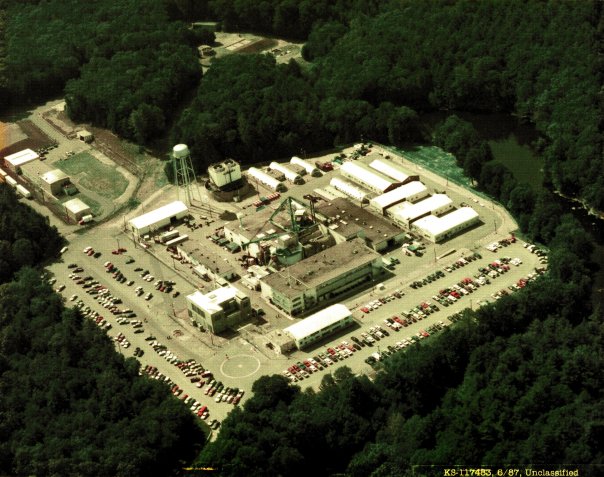S1C Reactor on:
[Wikipedia]
[Google]
[Amazon]
The S1C reactor was a prototype naval reactor designed for the
 This
This DOE Reactor Site Returns To Green Field Conditions - First Unrestricted Release Of A Nuclear Power Site
/ref> Remediation of the site was undertaken by
United States Navy
The United States Navy (USN) is the maritime service branch of the United States Armed Forces and one of the eight uniformed services of the United States. It is the largest and most powerful navy in the world, with the estimated tonnage ...
to provide electricity generation
Electricity generation is the process of generating electric power from sources of primary energy. For utilities in the electric power industry, it is the stage prior to its delivery ( transmission, distribution, etc.) to end users or its stor ...
and propulsion
Propulsion is the generation of force by any combination of pushing or pulling to modify the translational motion of an object, which is typically a rigid body (or an articulated rigid body) but may also concern a fluid. The term is derived from ...
on warship
A warship or combatant ship is a naval ship that is built and primarily intended for naval warfare. Usually they belong to the armed forces of a state. As well as being armed, warships are designed to withstand damage and are usually faster a ...
s. The S1C designation stands for:
* S = Submarine platform
* 1 = First generation core designed by the contractor
* C = Combustion Engineering
Combustion Engineering (C-E) was a multi-national American-based engineering firm that developed nuclear steam supply power systems in the United States. Originally headquartered in New York City, C-E moved its corporate offices to Stamford, Connec ...
(C-E) was the contracted designer
History
 This
This nuclear reactor
A nuclear reactor is a device used to initiate and control a fission nuclear chain reaction or nuclear fusion reactions. Nuclear reactors are used at nuclear power plants for electricity generation and in nuclear marine propulsion. Heat from nu ...
was built in Windsor, Connecticut
Windsor is a town in Hartford County, Connecticut, United States, and was the first English settlement in the state. It lies on the northern border of Connecticut's capital, Hartford. The population of Windsor was 29,492 at the 2020 census.
...
as a prototype for the experimental USS ''Tullibee'' (SSN-597) submarine, though that boat was in fact powered by a S2C reactor. Unusual for a nuclear submarine propulsion plant, steam turbines
A steam turbine is a machine that extracts thermal energy from pressurized steam and uses it to do mechanical work on a rotating output shaft. Its modern manifestation was invented by Charles Parsons in 1884. Fabrication of a modern steam turbi ...
powered generators, which in turn powered an electric motor
An electric motor is an electrical machine that converts electrical energy into mechanical energy. Most electric motors operate through the interaction between the motor's magnetic field and electric current in a wire winding to generate forc ...
. This eliminated the need for reduction gears and their associated underwater noise. The USS ''Tullibee'' was an early advanced-design, fast-attack submarine constructed by Electric Boat
An electric boat is a powered watercraft driven by electric motors, which are powered by either on-board battery packs, solar panels or generators.
While a significant majority of water vessels are powered by diesel engines, with sail po ...
and commissioned in 1960.
Throughout the Cold War, the S1C Prototype nuclear submarine propulsion plant at the Windsor Site (41°52'44"N 72°43'03"W) supported the submarines and surface ships of the Navy’s nuclear fleet by testing new equipment and training Naval propulsion plant operators. S1C was the prototype for the USS ''Tullibee''. The S1C Prototype was operated at the Windsor Site from 1959 until 1993. During that time, over 14,000 Naval operators were trained there, including Admiral Kirkland H. Donald early in his career.
The Windsor site was located at 1000 Prospect Hill Rd. (the address was later changed to 2000 Day Hill Road) on a 530-acre tract purchased by Combustion Engineering in 1955.
Full remediation of the S1C site was declared to be complete by the Connecticut Department of Environmental Protection
The Connecticut Department of Energy and Environmental Protection (DEEP) is a state agency in the US state of Connecticut. The department oversees the state's natural resources and environment and regulates public utilities and energy policy. I ...
in 2006./ref> Remediation of the site was undertaken by
Knolls Atomic Power Laboratory
Knolls Atomic Power Laboratory (KAPL) is an American research and development facility based in Niskayuna, New York and dedicated to the support of the US Naval Nuclear Propulsion Program. KAPL was instituted in 1946 under a contract between Gene ...
(KAPL), based out of Schenectady, New York
Schenectady () is a city in Schenectady County, New York, United States, of which it is the county seat. As of the 2020 census, the city's population of 67,047 made it the state's ninth-largest city by population. The city is in eastern New Yo ...
. KAPL had taken over operation of the S1C site in the 1970s after expiration of the Navy's original contract with C-E.
The reactor was situated on land and known as the S1C Nuclear Power Training Unit (NPTU). Regarding its size and electric drive, the system layout was different than the S5W reactor used in most nuclear-powered submarines at the time. The prototype and ship had four turbine generators (2 for DC power for propulsion and 2 for AC voltage) and banked rod control. There was only two levels in the engineering spaces and the electrical operator operated out in the engineering spaces unlike S5W or later submarines.
References
{{DEFAULTSORT:S1c Reactor United States naval reactors